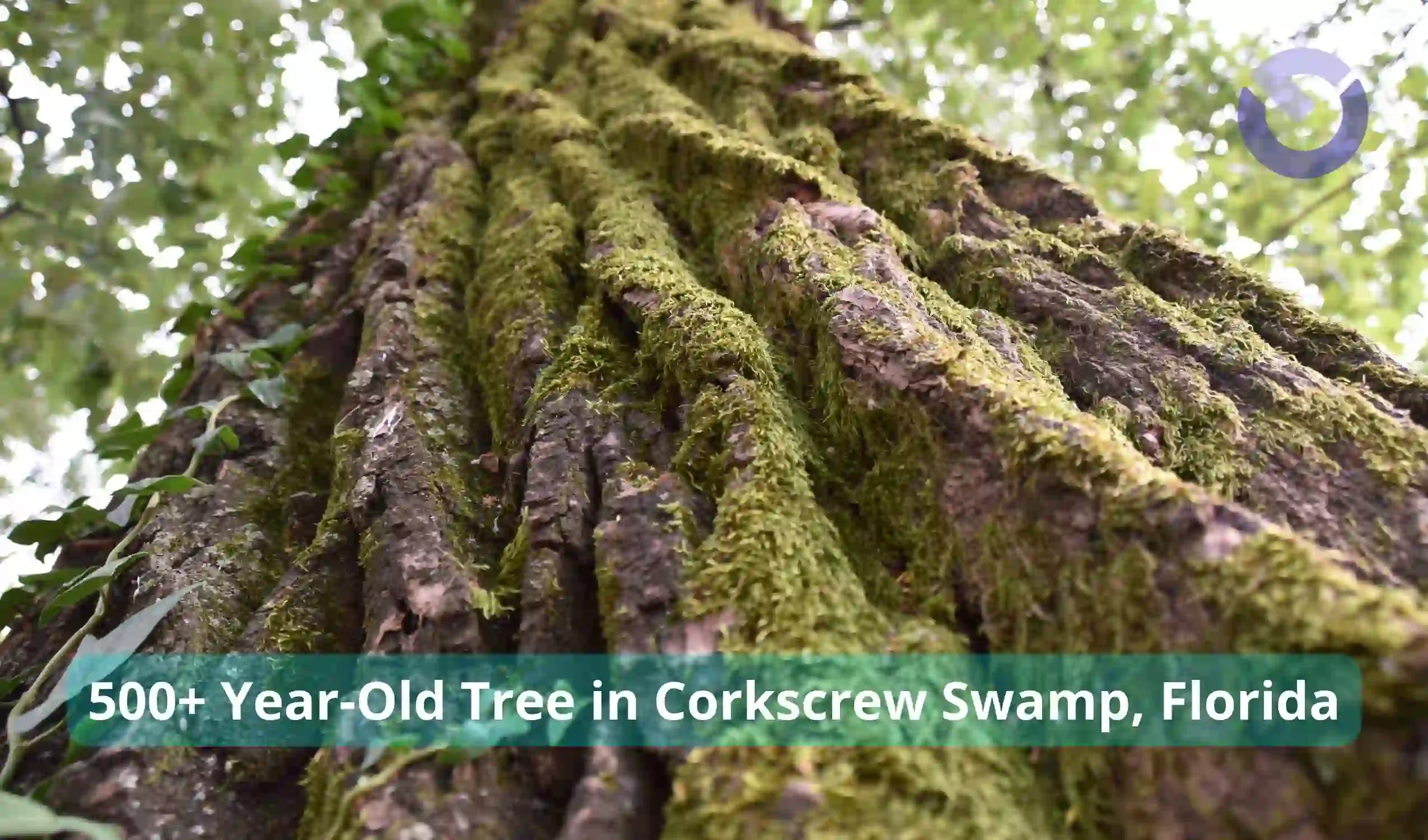Introduction to Ancient Trees and Their Ecosystems
Ancient trees, such as the 500+ year-old cypress tree featured in the National Geographic Travel X post, are remarkable not only for their impressive age but also for the unique ecosystems they support. These venerable giants, often found in natural habitats like Corkscrew Swamp in Florida, offer a fascinating glimpse into both the past and present of our natural world. The video shared by @NatGeoTravel on November 17, 2023, reveals the hidden interior of such a tree, providing a rare experience few get to witness.
The Significance of Corkscrew Swamp
Location and Biodiversity
Corkscrew Swamp, located in Florida, is an essential habitat boasting some of the oldest and largest cypress trees in the world, including the ancient tree explored in the video. This swamp is famous for its rich biodiversity, sheltering a variety of birds, mammals, and plant species. The 500+ year-old cypress stands as a symbol of resilience and longevity within this thriving ecosystem.
Historical Context
The cypress trees in Corkscrew Swamp hold deep historical importance. Some have stood for over 500 years, bearing witness to centuries of environmental shifts and human interactions. These trees act as living monuments of natural history, making their preservation crucial. National Geographic’s video shines a light on this significance and the ongoing efforts to protect these ancient giants.
Inside a 500+ Year-Old Tree A Unique Perspective
The Video Content
The X post by @NatGeoTravel features a captivating 28.5-second video that takes viewers inside the hollow interior of a 500+ year-old cypress tree in Corkscrew Swamp. The video’s key frames and subtitles highlight the vastness of the hollow trunk, encounters with wildlife such as fishing spiders, and the scientific challenges in dating hollow trees.
Exploring the Interior
The video opens with an exterior view of the enormous tree, labeled “POV: Inside a 500+ Year-Old Tree,” with a map pinpointing Corkscrew Swamp, Florida. As the camera moves inside, subtitles express excitement: “Well, we’ve got to go explore this. This is a big, big tree. It’s hollow. Let’s see what’s inside.” The interior is described as “huge,” showing textured walls and deep darkness, revealing the fascinating structure within.
Wildlife Encounters
One of the most striking moments in the video is the encounter with a fishing spider and its egg sac inside the hollow trunk. The subtitles read, “Got a fishing spider with an egg sac,” underscoring the tree’s role as a microhabitat. This glimpse into the tree’s ecosystem highlights how life thrives even within these ancient, hollow giants.
The Science Behind Dating Ancient Trees
Challenges in Dating Hollow Trees
Dating ancient trees, especially hollow ones, is notoriously difficult. The video notes the challenge of using traditional growth ring counting methods because the tree’s hollow interior lacks the full rings. Instead, scientists rely on radiocarbon dating or sediment analysis to estimate such trees’ age.
Estimating the Age of the Cypress
The featured cypress tree is estimated to be over 500 years old, though precise dating is tricky. Comparative research with other ancient cypress trees in the region, such as The Senator in Big Tree Park which was estimated to be about 3,500 years old before it perished in 2012 helps provide context for understanding the age range of trees like the one in Corkscrew Swamp.
The Role of National Geographic in Conservation
Mac Stone’s Contribution
The video is credited to Mac Stone, a National Geographic photographer renowned for his work documenting swamps and wetlands. Stone’s exploration of the 500+ year-old cypress forms part of his mission to shift public perceptions about these often overlooked ecosystems. His work highlights the critical importance of conserving ancient trees and their habitats.
Educational Impact
National Geographic’s platform amplifies the educational value of this kind of exploration. Sharing videos like this one inspires curiosity and fosters a sense of environmental responsibility among global audiences. The post has attracted much attention, with viewers expressing awe at the tree’s interior and the biodiversity it supports.
The Ecosystem Within the Tree
Microenvironments Inside Trees
Ancient trees create unique microenvironments. The hollow interiors provide shelter for various creatures, from insects to small mammals. The fishing spider and its egg sac shown in the video exemplify how these trees support biodiversity by offering safe breeding grounds and habitat niches within their trunks.
The Interconnectedness of Life
The wildlife inside the tree demonstrates the interconnected nature of life in these ecosystems. The hollow trunk protects and nurtures species, which in turn contribute to the ecological balance. This symbiotic relationship is essential for maintaining the health and sustainability of Corkscrew Swamp.
Conservation Efforts in Corkscrew Swamp
Protecting Ancient Trees
Conservation initiatives in Corkscrew Swamp focus on safeguarding these ancient trees and their surroundings. Organizations like National Geographic Society and local conservation groups actively work to prevent deforestation, pollution, and the impacts of climate change. The video serves as a powerful reminder of what is at stake.
Public Awareness and Engagement
Raising public awareness plays a crucial role in conservation success. The X post by @NatGeoTravel engages a worldwide audience, spreading knowledge about Corkscrew Swamp’s ecological importance. Comments from viewers reflect growing interest and concern, building a community dedicated to protecting these natural treasures.
The Cultural and Historical Value of Ancient Trees
Landmarks of Natural History
Ancient trees like the Corkscrew cypress are living landmarks. With centuries of life behind them, they have observed historical events and environmental transformations. These trees serve as archives of natural history, providing insights into ecological resilience.
Indigenous Perspectives
Indigenous groups, including the Seminole people, have long honored the spiritual and cultural significance of such trees. The modern exploration of the tree’s interior can be seen as a continuation of this respect. Recognizing these perspectives deepens our understanding and appreciation beyond the biological age of the trees.
The Future of Ancient Trees
Threats and Challenges
Ancient trees face many threats such as climate change, human activity, and natural disasters. Their hollow nature can make them vulnerable to fires and structural damage, as exemplified by The Senator. Protecting these trees requires combined efforts involving science, policy, and community engagement.
Hope for Preservation
Despite these challenges, hope remains for preserving ancient trees. Advances in conservation, heightened public awareness, and efforts by organizations like National Geographic provide optimism. The 500+ year-old tree in Corkscrew Swamp symbolizes the potential to save and protect our natural heritage.
Conclusion
The X post by @NatGeoTravel offers a captivating look inside a 500+ year-old tree in Florida’s Corkscrew Swamp. This rare exploration reveals not only the tree’s impressive size and age but also its role as a vital microecosystem supporting diverse life forms. Mac Stone’s video emphasizes the importance of conservation and inspires commitment to protect these ancient natural wonders for future generations.










Leave a Comment